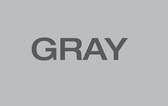|
Formula
Procedure of Application
Development Complete When
Source of Error
Incompatibilities
Precautions
Storage Container
Safety
Recommendations
Similar Reagent
Sequential Reagent
Formula
Procedure of Application
Development Complete When
Dark-gray latent prints are revealed after a gentle tap water rinse. Source of Error
Poor results are generally obtained on black electrical tapes, some paper labels, and tapes bearing dried out adhesives. Incompatibilities
Some tapes and adhesive labels absorb the paste too read readily, and cannot be rinsed of excess paste. Precautions
Do not leave the paste on the tape surface for too long, since it may be difficult to rinse off. Storage Container
Dark or Clear stoppered glass or plastic bottles. Safety
Safe! Recommendations
An alternative application method is to immerse tapes into a bowl containing the reagent. Similar Reagent
Sequential Reagent
Vertical Divider
|
Chemical Name
Sticky Side Powder Surface Used On Tape Surfaces Sensitive To Sebaecous & Lipid Components Abridged Reagent Sequence
Vertical Divider
|
Ridge Detail Visualized by:
Visible chemical/stain reaction Reagent Applicabilities: Non-Porous surfaces Post Cyanoacrylate Tape Surfaces Other Chemical Name(s): None Working Solution Shelf-life: Prepared as needed |
Process Summary:
The reagent is prepared as a paste, then is brushed unto the adhesive sides of tape surfaces. This reagent is considered to be a more economical alternative to other adhesive-tape processing methods. Cyanoacrylate fuming does not inhibit the use of this reagent.
The reagent is prepared as a paste, then is brushed unto the adhesive sides of tape surfaces. This reagent is considered to be a more economical alternative to other adhesive-tape processing methods. Cyanoacrylate fuming does not inhibit the use of this reagent.
Accepted Deviations:
Commercial kits are available for use. The reagent may be mixed vigorously to create a foam solution. The reagent may be repeatedly applied, if necessary, to improve the detail.
Commercial kits are available for use. The reagent may be mixed vigorously to create a foam solution. The reagent may be repeatedly applied, if necessary, to improve the detail.
Supporting Reference Materials:
- Minutiae Magazine, Summer Special 1994, Issue No. 24, pg.7.
- "Chemical Formulas and Processing Guide for Developing Latent Prints", U.S. Dept. of Justice, pg. 47-48, 1994.
- Advances in Fingeprint Technology 2nd. Ed., Lee, H.C. & Gaensslen, R.E., CRC Press, Boca Raton, FL., 2001.
- Manual of Fingerprint Development Techniques 2nd. Ed., Home Office - Police Scientific Development Branch, White Crescent Press, Ltd., Luton, England, 2001.
- Technical Notes, Lightning Powder Co. Inc., Salem, OR., 2001.




